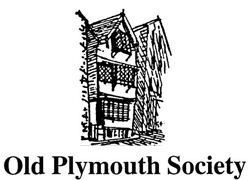by Walton Gale
Published August 2012
There seemed to be a lot of horses in the town when I was a child. Surely I wasn’t born before the invention of the horseless carriage? Sometimes I feel as though I must have been.
Once or twice a week a large horse drawn vehicle trawled the back lanes of St Judes bearing the banner of the Plymouth Co-Operative Society. It was laden with a substantial cargo of fruit and vegetables. This vehicle dragged beneath it a large steel chisel pointed bar which rattled over the cobblestones and aroused the housewives in their kitchens. I realised later that the bar’s real purpose was to stop the vehicle rolling backwards when it came to rest whilst customers were being served. Presumably this enabled the horse to relax on its shafts or have a smoke or whatever horses do for respite!
There was also a very small covered wagon drawn by a pony. This carried large blocks of gleaming white salt. You waited and watched while the driver took a saw and cut off a slab of the stuff. This you took into the kitchen, hit it with a rolling pin and transferred the resulting heap into a large stone jar.
Mr Baker from Embankment Road came around the front streets no back lanes for him! His one horse vehicle was somewhat like a roman chariot. He stood up in it behind 2 large milk churns and carried his lacteal beverage from door to door in a “Dixie”. Joe Simpson called on Fridays with fish, calling his wares in a voice which was rough enough to make normal conversation almost impossible for him. Pooleys bread van passed down Grenville Road and if you were quick enough to catch the trotting horse you could sit on the step iron – which enabled the baker to climb into the back of his wagon – and get yourself a ride to school! Not to be recommended!!
I cannot recall ever seeing a taxi cab at Friary Station, but there were always two or three elegant carriages there. I can’t recall ever having ridden in one either To take a carriage home from the station when returning from a summer holiday would have been an inexcusable extravagance!
Not to be forgotten were the dustmen. We had no paper bags and the galvanised dustbin had yet to make its appearance, so the back garden wall housed a small doorway. This was connected to a small stone box which had its own entrance in the courtyard. The household rubbish went into this. When the dustman came, he opened the outside door and usually shovelled the contents into an old zinc bath which he carried back to his cart. You can see these small doorways in the back lane of the southern side of Beaumont Road. What happened to the refuse? It was taken to the city’s “destructor’ where the flammable element was used to fuel the boilers which powered the turbines at Plymouth’s power station. What a novel idea!!
Down in King Street at 4pm you could see a string of horses coming from the Dockyard to Major Hichens’s stables in Octagon Street. In nearby Bath Street the GWR horses were returning to their stables under the arches beneath Millbay station. In Exeter Street the Co-operative Society horses were being washed down by Hawker Avenue.
But we all turned out to see Dr Pearn’s antique motor when it appeared in public!
